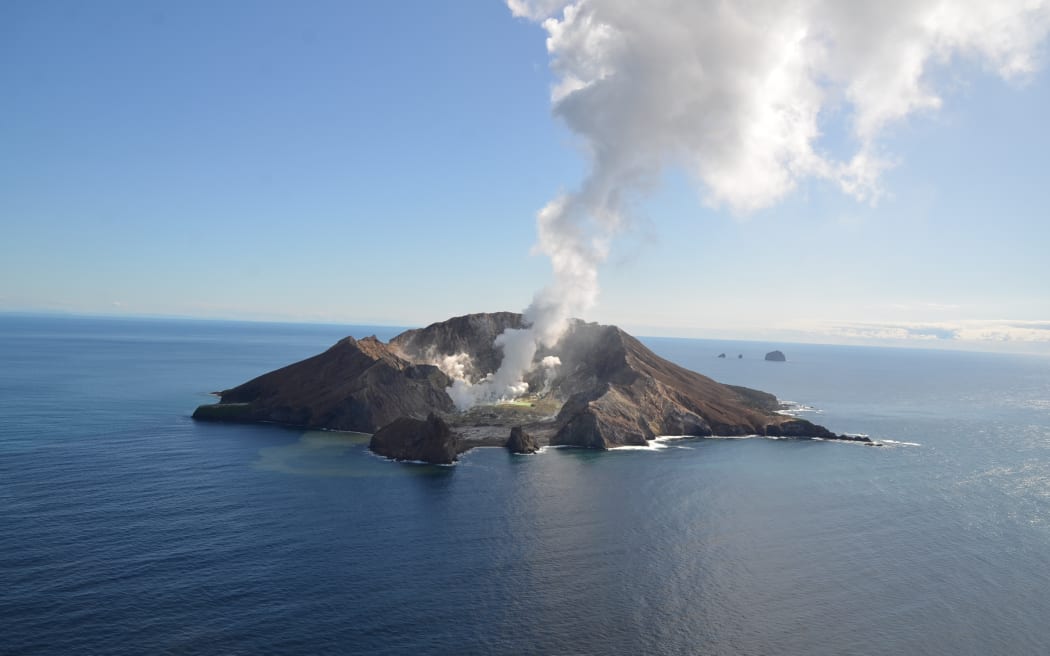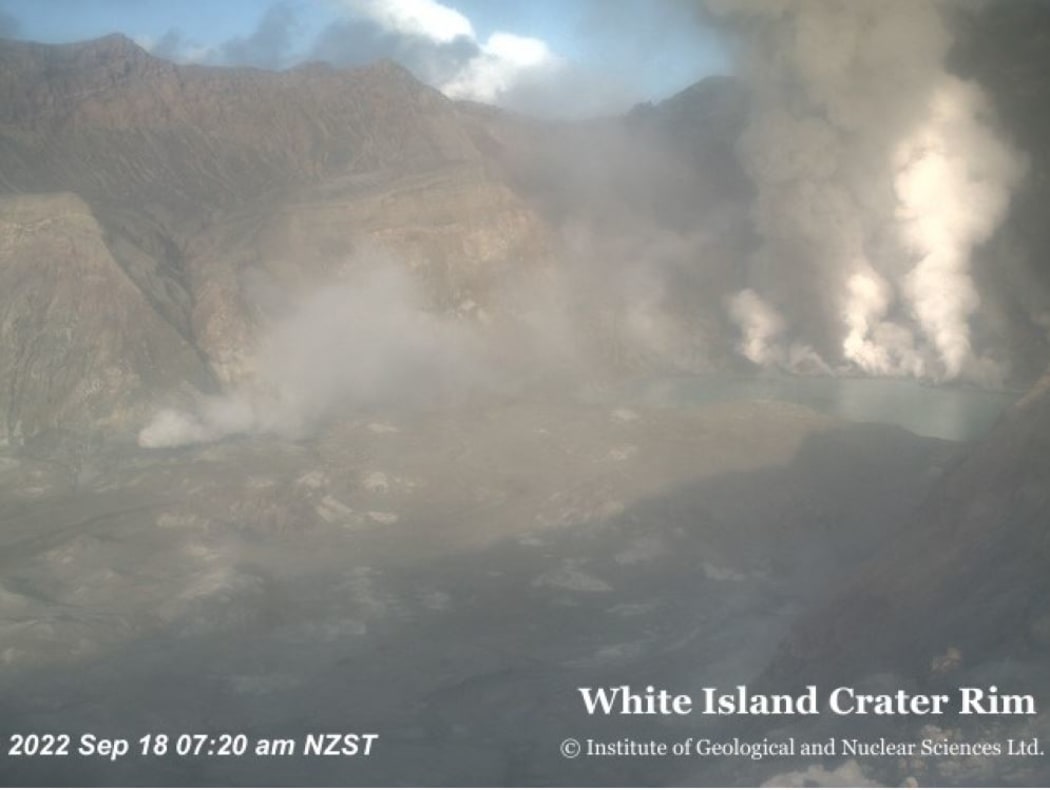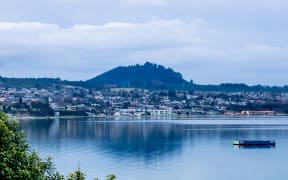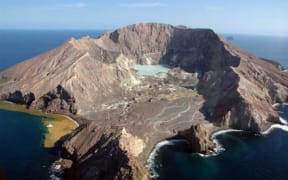
View of Whakaari / White Island from a monitoring flight on 31 August, 2022. Photo: GNS
There may have been an eruption on Whakaari/White Island recently but no-one knows for sure.
Scientists are unable to confirm because of faulty monitoring equipment on the volcano off the Bay of Plenty coast.
Large plumes of white steam, which reached a height of 600 metres above the island, could be seen from as far away as the Pāpāmoa hills over the weekend, prompting questions around whether an eruption had occurred.
However, a lack of real-time data prevented GeoNet from giving a definite answer thanks to an on-island seismic system beset with issues that cannot be repaired remotely.
While this sounds academic, it is not. It means GeoNet cannot raise the volcanic alert level, which indicates if a larger eruption is imminent.
An eruption on 9 December, 2019, claimed the lives of 22 people and injured a further 25 - most of whom were tourists. Access to the island has been strictly limited ever since. The volcano sits 48km off the Whakatāne coastline.
GNS Science volcanologist Steve Sherburn said the most likely explanation for the ash emission and sulphur dioxide plume, visible on 18 September, was a "small batch of magma moving into the shallow part of the volcano".
"We are working hard on a plan to safely return to Whakaari to do critical maintenance to re-establish real-time monitoring," Sherburn said.
"The recent loss of access to continuous data means we are effectively unable to distinguish in near real-time between minor volcanic unrest and moderate-to-heightened unrest," he said.
"As a result, the volcanic alert level for Whakaari/White Island was raised to level two on September 7 to reflect the increased level of uncertainty in our interpretation due to the current lack of real-time data, not as an indication of a noticed increase in volcanic activity."

Ash emission from an active vent on Whakaari / White Island on 18 September, 2022. Photo: GNS
Sherburn said he was uncertain as to why the seismic station data was so intermittent.
"It started to work again on Monday [September 19], but we do not know if it will keep working in the coming days," he said.
"Until our network is restored, we are conducting more regular manual monitoring to detect changes at the volcano.
"This includes increased observation and gas measurement flights as the weather allows, and enhanced monitoring of available webcam images. We are using satellite data to detect deformation changes at the volcano and to detect large volcanic gas signals."
If an eruption were able to be confirmed, GeoNet said that the volcanic alert level would be raised.
"Volcanic alert level two, which is what Whakaari is set at now, is the highest non-eruption alert level," Sherburn said.
"We still have intermittent access to webcam images from the island, providing some level of visual monitoring between our flights," he said.
"We also work closely with MetService, and their rain radar can see an eruption ash column provided it is at least 2400 metres high."
It was common to see large steam and gas plumes from Whakaari/White Island when weather conditions allowed, Sherburn said.
"But eruptions can occur with little or no warning, whether we have real-time data from the island or not," he said.
This story was originally published on Stuff's website.






